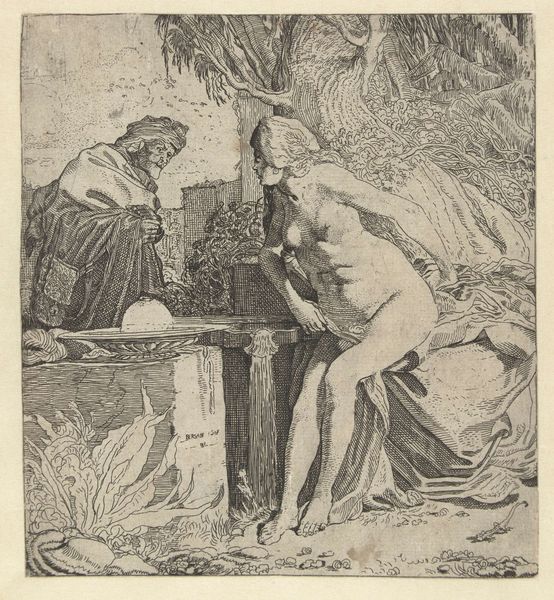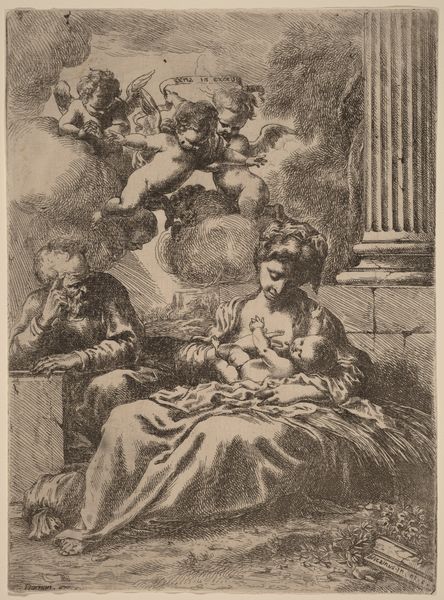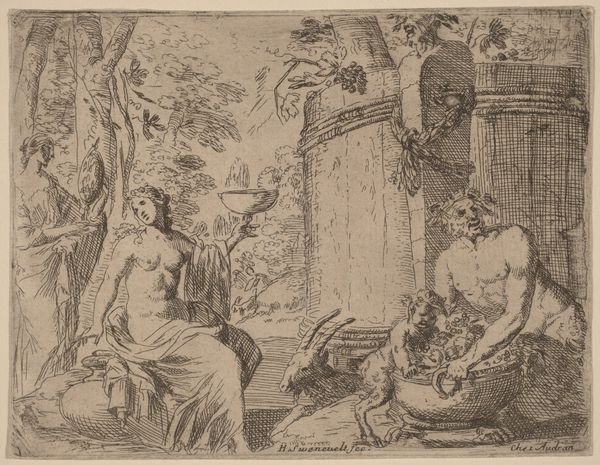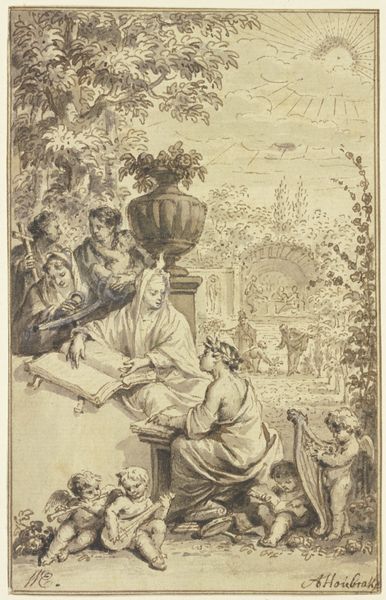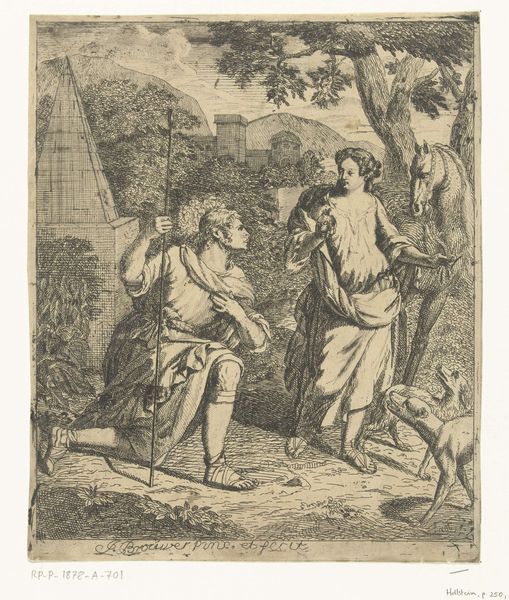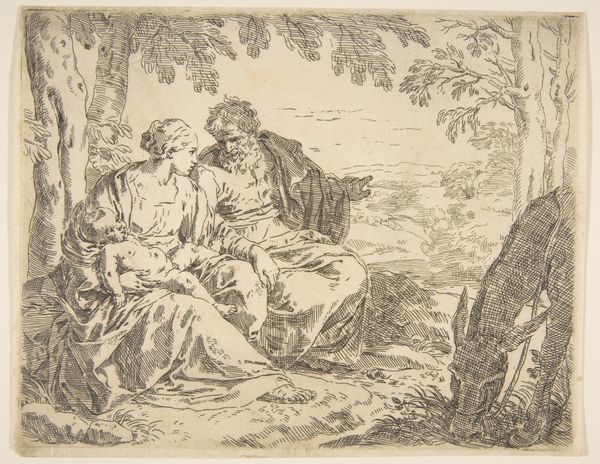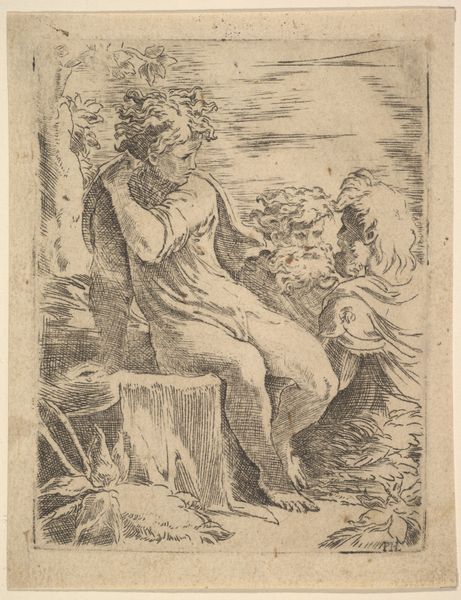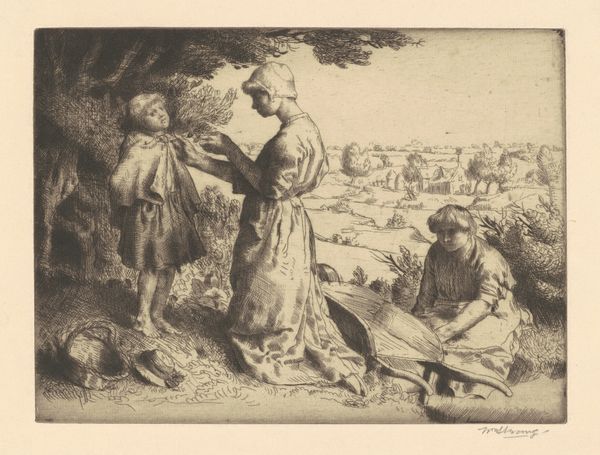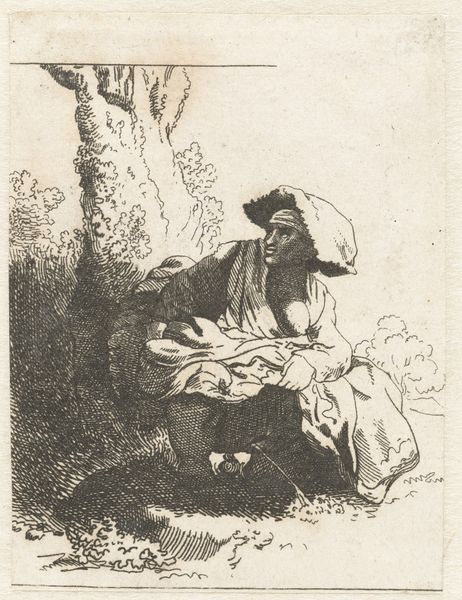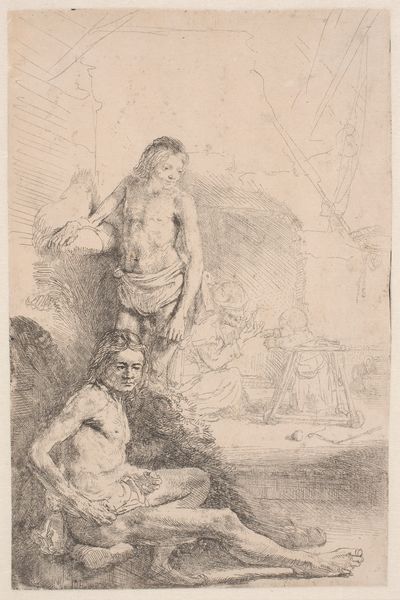
Dimensions: overall: 31.9 x 23.9 cm (12 9/16 x 9 7/16 in.)
Copyright: National Gallery of Art: CC0 1.0
Curator: The artwork we're looking at is François-Nicolas Chifflart's "Meditation," created around 1865. It's an etching, printed in ink. Editor: My first impression is a heavy feeling of melancholy. The dark, dense hatching emphasizes the downcast figure in the foreground, almost swallowed by the surrounding shadows. Curator: The cross-hatching is remarkable; it's how Chifflart builds up volume and conveys that pervasive sense of gloom that you pick up on. Notice how the texture varies—from the fine lines describing the figure's skin to the rougher, almost chaotic strokes forming the backdrop. Editor: It definitely contributes to a feeling of unease, doesn’t it? One has to ask, what socio-political conditions allowed the artist to focus on the depiction of despair and despondency, when other issues might have dominated artistic production. Was this figure's inner turmoil somehow emblematic of the broader anxieties of the time? Curator: Indeed. This interest in exploring individual psychology aligns well with Romanticism, which emphasized emotion and introspection. I wonder what is relationship to History Painting because this could also be read in context. But, formalistically, consider how his slumped posture is framed. The sharp angles of the stone ledge contrast with the softness of the figure, reinforcing the burden he appears to carry. Editor: The Romantic Era was one of immense change and instability. In the 1860s, European society was changing drastically in response to the industrial revolution. We must recall the public appetite for such depictions of human tragedy amid these transformations, too, and the artist's reaction to these developing social, technological, or economic anxieties. Curator: I agree, context deepens our viewing. Still, the visual tension itself– between the rigid structure and yielding form, shadow and light – produces a compelling meditation. I noticed, on second view, the second figure, almost in the background like an after-thought. Or perhaps it is an ethereal version of our original meditating person. It certainly contributes to my perception of melancholy here. Editor: By considering "Meditation" within its historical moment and visual forms, we see how art functions as a register of human experience. I will certainly think about this piece and the public appetite when reflecting upon what art has to teach us about our interior selves.
Comments
No comments
Be the first to comment and join the conversation on the ultimate creative platform.
